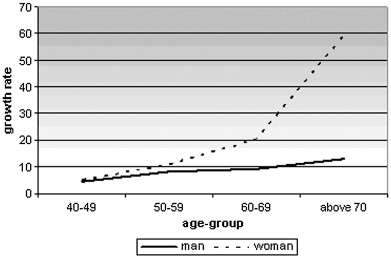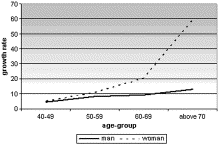Retrieval Request
Retrieving content via the RESTful APIs is broken down across the following categories, with complete API documentation available from each link:
Abstract Retrieval - retrieve abstracts from Scopus.
Affiliation Retrieval - retrieve an Insitution's Scopus profile information. Go here for how to guide.
Article Retrieval - retrieve full-text from ScienceDirect.
Author Retrieval - retrieve an Author's Scopus profile information. Go here for how to guide.
Object Retrieval - retrieve multimedia objects from ScienceDirect.
Retrieval Views, Fields, and Resolved References
Some views return more, some less, and a view does not have to be explicitly defined - there is a default. The views for each retrieval API are here:
Abstract Retrieval Views
Affiliation Retrieval Views
Article Retrieval Views
Author Retrieval Views
Object Retrieval Views
How to make requests for objects
Retrieving media attachments for ScienceDirect content is best accomplished with a multi-step process.
The general idea:
- Start with the unique identifier (PII or DOI) of a ScienceDirect document
- Retrieve its attachment metadata via the "META" view
- Parse the response and retrieve the desired attachment(s) utilizing the returned api request urls.
Here is the URL syntax for one form of attachment retrieval. Note the use of the object {content-category}:
/content/object/{identifier_label}/{unique_identifier}/ref/{ref-id}?httpAccept={mime-type}&view={thumbnail|standard|high}
Where:
{identifier_label} are only one of PII or DOI
{unique_identifier] is the actual PII or DOI
{ref-id}, drawn from object metadata, is any <ref> from any <attachment>
{mime-type} is the attachment's {mime-type}
view, derived from object metadata, is any of {thumbnail|standard|high}
While somewhat useful to know, it is easier to simply utilize the URL returned for the specific type of attachment desired since it resolves to a specific attachment using a unique object identifier.We'll start with this PII: S0167527308011704
We'll take that PII and pull back the metadata associated with it:
[Request headers] X-ELS-APIKey: 5135c5817a6d86b633013ee9e4d120b5 Accept: text/xml [Request URL] https://api.elsevier.com/content/object/pii/S0167527308011704?view=META
That request's response (Note the <prism:url> elements for each <attachment>):
[Request Response}
<attachment-metadata-response xmlns:prism="http://prismstandard.org/namespaces/basic/2.0/">
<attachment>
<prism:url>https://api.elsevier.com/content/object/eid/1-s2.0-S0167527308011704-gr1.jpg?httpAccept=%2A%2F%2A</prism:url>
<eid>1-s2.0-S0167527308011704-gr1.jpg</eid>
<ref>gr1</ref>
<filename>gr1.jpg</filename>
<mimetype>image/jpeg</mimetype>
<size>31014</size>
<height>258</height>
<width>391</width>
<type>IMAGE-DOWNSAMPLED</type>
</attachment>
<attachment>
<prism:url>https://api.elsevier.com/content/object/eid/1-s2.0-S0167527308011704-gr1.sml?httpAccept=%2A%2F%2A</prism:url>
<eid>1-s2.0-S0167527308011704-gr1.sml</eid>
<ref>gr1</ref>
<filename>gr1.sml</filename>
<mimetype>image/gif</mimetype>
<size>4704</size>
<height>145</height>
<width>219</width>
<type>IMAGE-THUMBNAIL</type>
</attachment>
<attachment>
<prism:url>https://api.elsevier.com/content/object/eid/1-s2.0-S0167527308011704-gr1_lrg.jpg?httpAccept=%2A%2F%2A</prism:url>
<eid>1-s2.0-S0167527308011704-gr1_lrg.jpg</eid>
<ref>gr1</ref>
<filename>gr1_lrg.jpg</filename>
<mimetype>image/jpeg</mimetype>
<size>167998</size>
<height>1144</height>
<width>1733</width>
<type>IMAGE-HIGH-RES</type>
</attachment>
<attachment>
<prism:url>https://api.elsevier.com/content/object/eid/1-s2.0-S0167527308011704-gr2.jpg?httpAccept=%2A%2F%2A</prism:url>
<eid>1-s2.0-S0167527308011704-gr2.jpg</eid>
<ref>gr2</ref>
<filename>gr2.jpg</filename>
<mimetype>image/jpeg</mimetype>
<size>52667</size>
<height>307</height>
<width>578</width>
<type>IMAGE-DOWNSAMPLED</type>
</attachment>
<attachment>
<prism:url>https://api.elsevier.com/content/object/eid/1-s2.0-S0167527308011704-gr2.sml?httpAccept=%2A%2F%2A</prism:url>
<eid>1-s2.0-S0167527308011704-gr2.sml</eid>
<ref>gr2</ref>
<filename>gr2.sml</filename>
<mimetype>image/gif</mimetype>
<size>5178</size>
<height>116</height>
<width>219</width>
<type>IMAGE-THUMBNAIL</type>
</attachment>
<attachment>
<prism:url>https://api.elsevier.com/content/object/eid/1-s2.0-S0167527308011704-gr2_lrg.jpg?httpAccept=%2A%2F%2A</prism:url>
<eid>1-s2.0-S0167527308011704-gr2_lrg.jpg</eid>
<ref>gr2</ref>
<filename>gr2_lrg.jpg</filename>
<mimetype>image/jpeg</mimetype>
<size>352152</size>
<height>1357</height>
<width>2559</width>
<type>IMAGE-HIGH-RES</type>
</attachment>
<attachment>
<prism:url>https://api.elsevier.com/content/object/eid/1-s2.0-S0167527308011704-gr3.jpg?httpAccept=%2A%2F%2A</prism:url>
<eid>1-s2.0-S0167527308011704-gr3.jpg</eid>
<ref>gr3</ref>
<filename>gr3.jpg</filename>
<mimetype>image/jpeg</mimetype>
<size>60002</size>
<height>308</height>
<width>627</width>
<type>IMAGE-DOWNSAMPLED</type>
</attachment>
<attachment>
<prism:url>https://api.elsevier.com/content/object/eid/1-s2.0-S0167527308011704-gr3.sml?httpAccept=%2A%2F%2A</prism:url>
<eid>1-s2.0-S0167527308011704-gr3.sml</eid>
<ref>gr3</ref>
<filename>gr3.sml</filename>
<mimetype>image/gif</mimetype>
<size>7732</size>
<height>108</height>
<width>219</width>
<type>IMAGE-THUMBNAIL</type>
</attachment>
<attachment>
<prism:url>https://api.elsevier.com/content/object/eid/1-s2.0-S0167527308011704-gr3_lrg.jpg?httpAccept=%2A%2F%2A</prism:url>
<eid>1-s2.0-S0167527308011704-gr3_lrg.jpg</eid>
<ref>gr3</ref>
<filename>gr3_lrg.jpg</filename>
<mimetype>image/jpeg</mimetype>
<size>366801</size>
<height>1364</height>
<width>2776</width>
<type>IMAGE-HIGH-RES</type>
</attachment>
</attachment-metadata-response>
Note that there are three category of attachment resolution: IMAGE-THUMBNAIL (smallest), IMAGE-DOWNSAMPLED (regular), and IMAGE-HIGH-RES (high resolution) - these are equivalent to the views THUMBNAIL, STANDARD, and HIGH, respectively (for non-images only the STANDARD view would be applicable).
Next, send any <prism:url> from the response back to the api (we're using the first one, here). Note that we've eliminated the content type declaration from the 'Accept' header. We'll let the httpAccept URL parameter specify that, unlike making a document retrieval request:
[Request headers] X-ELS-APIKey: 5135c5817a6d86b633013ee9e4d120b5 Accept: [Request URL] https://api.elsevier.com/content/object/eid/1-s2.0-S0167527308011704-gr1.jpg?httpAccept=%2A%2F%2A
And that request's response is this image:

And here is that image again, returned using the <prism:url> with the same 'ref' name with type IMAGE-THUMBNAIL:

